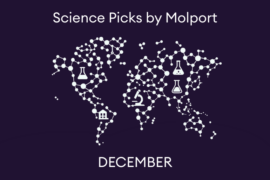9 Key Trends of Medicinal Chemistry from EFMC Rome
The landscape of medicinal chemistry is rapidly evolving, driven by groundbreaking research and innovative technologies. As we push the boundaries of what’s possible, new methodologies and targets are emerging that have the potential to revolutionize drug discovery and development. In this post, we’ll delve into some of the most exciting trends from EFMC Rome, from PROTACs and targeted protein degradation to the growing role of green chemistry in making drug synthesis more sustainable. Whether you’re curious about advancements in macrocyclic chemistry or intrigued by the rise of siRNA, these key areas set the stage for the next generation of therapeutic breakthroughs. Let’s take a closer look at each trend shaping the future of modern medicine.
PROTAC & Targeted Protein Degradation
PROTAC (Proteolysis Targeting Chimeras) is revolutionizing drug discovery by enabling the selective degradation of disease-causing proteins. This method shows promise in treating diseases like cancer and neurodegenerative disorders by targeting previously “undruggable” proteins.
DEL (DNA-Encoded Libraries)
DEL technology allows the rapid screening of billions of small molecules by tagging them with DNA. This approach accelerates the drug discovery process by more efficiently identifying potential therapeutic candidates.
Photoredox Chemistry
This cutting-edge approach uses light to catalyze reactions, opening new pathways in synthetic chemistry. It’s gaining traction in drug development due to its ability to facilitate challenging transformations with high selectivity.
Macrocyclic Chemistry
Macrocycles, with their large ring structures, offer unique opportunities for drug design. Their ability to tackle challenging targets, like protein-protein interactions (PPIs), provides MedChem with extra gear for drug design and exploring novel chemical space. This kind of compound is underrepresented by most vendors. But how “macro” should these macrocycles be? Should they be limited to oligopeptides or have different chemistry? What reaction portfolio would be ideal for the cyclization process (metathesis, Mithzunobu, etc.)?
Green Fluoro Chemistry
Fluorine-containing compounds are gaining more and more importance in modern drugs and drug design. Despite that, the chemistry for generating fluoro–reagents is still primitive and pretty much the same as 200 years ago… and worst of all, it is not environmentally friendly. There are already major ecological disasters related to mining Fluoro minerals. Green fluoro chemistry focuses on developing environmentally friendly methods for incorporating fluorine atoms into molecules, reducing environmental impact. For Molport, ecologically friendly reagents are a must and a very promising direction.
Kinases & GPCRs
More than 40% of known drugs are directed to Kinases and G-protein-coupled receptors (GPCRs), so, not surprisingly, we still see much interest among them. However, the interest has shifted from direct modulators to allosteric modulation.
PPIs (Protein-Protein Interactions)
Targeting protein-protein interactions offers new therapeutic opportunities, especially in areas like cancer and immune disorders. Advances in this area are overcoming the historical challenges of developing small molecules that disrupt these interactions.
siRNA (Small Interfering RNA)
siRNA technology silences specific genes by degrading their mRNA, offering a powerful tool for treating genetic diseases. It can potentially target previously undruggable genes, making it a key player in precision medicine. Would this technique replace small-molecule drugs? Are there any specific siRNA-related reagents that scientists would like to see represented in the Molport catalog?
Spiro Chemistry
Medicinal chemists are increasingly concerned about screening compounds’ lack of tridimensionality. Spiro compounds, characterized by their unique ring systems, are ideal for “shape design,” leading to structural novelty and biological activity. They provide new scaffolds for drug discovery with potential applications in diverse therapeutic areas.




